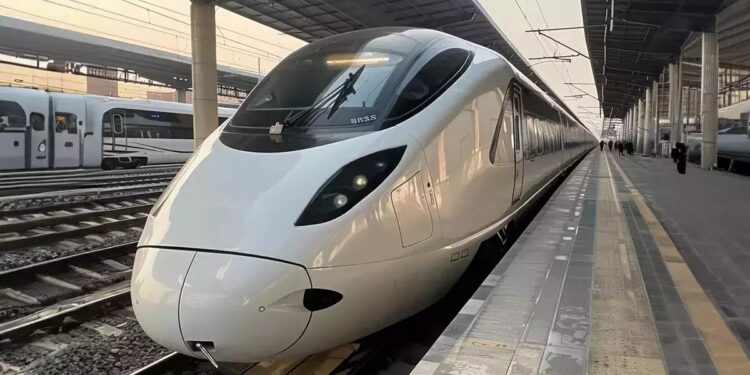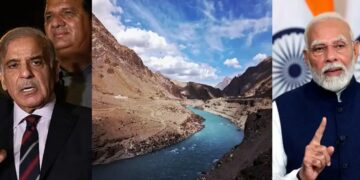Many developed countries have built high-speed rail networks to boost economic growth and improve transportation. Japan was the first to introduce high-speed rail in 1964 with the Shinkansen, connecting Tokyo and Osaka. Over time, this network helped link cities, creating a strong economic region. Other countries like France, Germany, and China followed, developing advanced rail systems that revolutionized travel.
India’s Bullet Train Project
India is now working on its first high-speed rail project, the Mumbai-Ahmedabad High-Speed Rail (MAHSR) corridor. Railway Minister Ashwini Vaishnaw has stated that the project will transform cities along the route into one large economic zone, similar to Japan’s experience.
As of October 2024, the project is 47.17% complete. It was approved in 2015 and is expected to cost Rs 1.08 lakh crore. So far, Rs 67,486 crore has been spent. The project, led by the National High-Speed Rail Corporation Ltd. (NHSRCL), employs 31,350 workers and 3,350 staff.
Key Infrastructure Developments
The corridor spans 508 km, linking Mumbai and Ahmedabad via Surat and Vadodara. Some major achievements include:
272 km of viaduct construction completed
Multiple river crossings, railway bridges, and tunnels built
India’s first undersea rail tunnel (21 km long) under construction beneath Thane Creek
Challenges and Delays
This ambitious project has faced delays due to land acquisition issues, construction setbacks, and negotiations with Japan for the Shinkansen trains. However, such obstacles are common in large-scale projects. The long-term benefits of the corridor are expected to outweigh these challenges.
Benefits of High-Speed Rail
Once completed, the Mumbai-Ahmedabad route will cut travel time from six to eight hours to just 2.5 hours. The high-speed train will operate at over 250 km/h, making it a game-changer for business, trade, and daily commuters.
Learning from Global High-Speed Rail Success
Japan’s Model
Japan’s first bullet train between Tokyo and Osaka created a booming economic corridor. Today, Japan has nine high-speed rail lines covering 22 major cities, transporting 420,000 passengers daily.
Europe’s Expansion
Germany launched its InterCityExpress (ICE) in 1991, covering 1,334 km.
France introduced its Train à Grande Vitesse (TGV) in 1981, now spanning 2,800 km.
China has the largest high-speed rail network, covering over 50,000 km.
All these countries started with busy routes, ensuring high passenger traffic and revenue to support expansion.
India’s Path to High-Speed Rail
India has the world’s fourth-largest rail network but lacks high-speed trains. Efforts to introduce them began in the 2000s. In 2013, India partnered with Japan to conduct feasibility studies for the MAHSR corridor. In 2015, Japan agreed to fund 81% of the project through a 50-year loan at 0.1% interest.
Japan is also providing the E5 Series Shinkansen trains and training 4,000 Indian workers. Studies predict that in its first year, the Mumbai-Ahmedabad corridor will serve 40,000 passengers daily.
Economic Impact: Surat’s Diamond Industry
One of the biggest beneficiaries of the project is Surat, home to India’s diamond industry. Surat processes 90% of the world’s rough diamonds, employing 1.5 million workers and contributing $24 billion to India’s exports.
With the bullet train, travel time between Surat and Mumbai will shrink to just one hour from the current 10 hours. This will help diamond traders move between Surat’s Diamond Bourse and Mumbai’s Bharat Diamond Bourse more efficiently. Faster travel will boost business, lower costs, and attract more international buyers.
The Future of High-Speed Rail in India
India plans to expand high-speed rail beyond Mumbai-Ahmedabad. Future projects include Delhi-Mumbai (1,386 km), Chennai-Delhi (2,200 km), and Mumbai-Kolkata (2,000 km).
With a growing population and strong economy, India is on the path to building a world-class high-speed rail system. Despite initial challenges, the long-term economic and transportation benefits will be immense, making high-speed rail a key part of India’s future growth.

















Comments